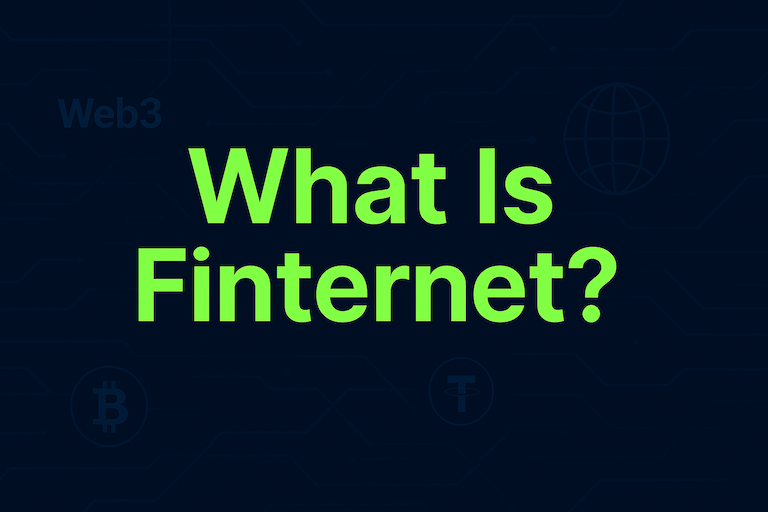What is Fiat Currency?
Jan 26, 2025
Fiat currency is the cornerstone of modern economies, representing government-issued money that holds value based on trust rather than intrinsic worth or commodity backing. This blog explores the origins, functions, advantages, and criticisms of fiat currency, highlighting its central role in the global financial system. We will discuss how fiat currency differs from other forms of money, including cryptocurrencies and commodity-backed currencies. Additionally, we will explore its impact on economic policies and financial markets. By the end, readers will have a clear understanding of what fiat currency is and why it matters.
Introduction to Fiat Currency
Fiat currency is a form of money that derives its value from the authority and trust of the government that issues it, rather than from physical commodities like gold or silver. Unlike earlier forms of money that were tied to tangible assets, fiat currency exists solely as a medium of exchange based on societal agreement. This system enables economies to operate flexibly, as governments can issue and regulate money to meet the needs of their economies. However, its value depends entirely on public confidence in the issuing authority. Understanding fiat currency is essential for grasping the mechanisms of modern finance and economics.
Some key features differentiate fiat currency from other forms of money. These include its lack of intrinsic value, government backing, and widespread acceptance in daily transactions. Fiat currency is versatile and convenient, but it also has limitations that can lead to economic instability if mismanaged. To fully understand its importance, it’s crucial to examine its historical evolution and role in today’s world.
Fiat currency is not backed by physical commodities like gold or silver.
Its value comes from trust in the issuing government.
It is widely accepted as a medium of exchange within a given economy.
Governments can control its supply to manage economic stability.
Public confidence is critical for maintaining its value.
History of Fiat Currency
The history of fiat currency dates back to ancient China, where paper money first appeared during the Tang Dynasty in the 7th century. Over time, this concept spread to other parts of the world, evolving into the form we recognize today. During the early modern period, many economies transitioned from commodity-based currencies to fiat systems to address the limitations of gold and silver. Governments realized that controlling the money supply could enhance economic stability and growth.
The shift to fiat currency gained momentum during the 20th century when the gold standard was abandoned. This change allowed nations to issue money freely without requiring reserves of precious metals. While this system offered increased flexibility, it also introduced new risks, such as inflation and monetary policy mismanagement. Understanding this historical context helps to appreciate the advantages and challenges associated with fiat currency.
Fiat currency was first introduced in China during the Tang Dynasty.
It replaced commodity-based systems to provide more flexibility.
The transition accelerated during the 20th century with the end of the gold standard.
Governments gained more control over monetary policy under fiat systems.
Modern fiat currencies are now the global standard.
Advantages of Fiat Currency
Fiat currency offers several advantages that make it a preferred choice for modern economies. One of the most significant benefits is its flexibility, allowing governments to adjust the money supply to meet economic demands. This flexibility enables central banks to implement monetary policies that address inflation, unemployment, and economic growth. Fiat currency also eliminates the need for resource-intensive commodity reserves, making it more cost-effective to produce and manage.
Another advantage is its universal acceptance within national borders, which facilitates trade and economic activity. Fiat currency is also easier to store and transport compared to physical commodities. Moreover, it supports complex financial systems by enabling credit creation, investment, and other economic activities. These advantages make fiat currency indispensable in today’s interconnected global economy.
Criticisms and Risks of Fiat Currency
While fiat currency has many advantages, it is not without its criticisms and risks. One major concern is its susceptibility to inflation, as governments can overissue money, leading to a decline in its value. Hyperinflation is an extreme example of this, where the purchasing power of money rapidly erodes. Another criticism is that fiat currency relies heavily on public trust in the issuing authority. If trust is lost, the currency’s value can collapse.
Fiat currency is also vulnerable to manipulation through monetary policies, which may prioritise short-term goals over long-term stability. Additionally, the lack of intrinsic value means that fiat currency is only worth what people believe it to be. This characteristic can lead to economic instability during times of crisis. Understanding these risks is crucial for recognising the limitations of fiat currency.
Fiat Currency vs Cryptocurrencies
Fiat currency and cryptocurrencies are two distinct forms of money, each with unique characteristics. While fiat currency is issued and regulated by governments, cryptocurrencies operate on decentralised networks using blockchain technology. Cryptocurrencies are not tied to any central authority, which makes them resistant to government control but also more volatile.
Fiat currency is widely accepted and integrated into global financial systems, making it more practical for everyday transactions. In contrast, cryptocurrencies are still gaining acceptance and are primarily used for specific purposes. Cryptocurrencies offer advantages like transparency and security but lack the stability and universal trust that fiat currencies enjoy. Comparing these two systems highlights the strengths and weaknesses of each.
Conclusion
Fiat currency is a foundational element of modern financial systems, enabling governments to manage economies effectively and flexibly. While it offers numerous benefits, such as ease of use, cost efficiency, and support for complex financial systems, it also comes with risks like inflation and reliance on public trust. By understanding its history, advantages, and criticisms, we can better appreciate its role in shaping the global economy. As new forms of money like cryptocurrencies emerge, the future of fiat currency will continue to evolve, offering new opportunities and challenges.
Start your safe cryptocurrency journey now
Fast and secure deposits and withdrawals, OSL safeguards every transaction !


